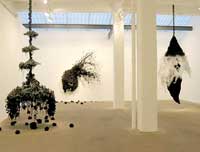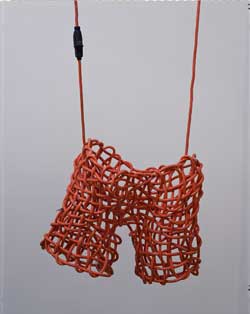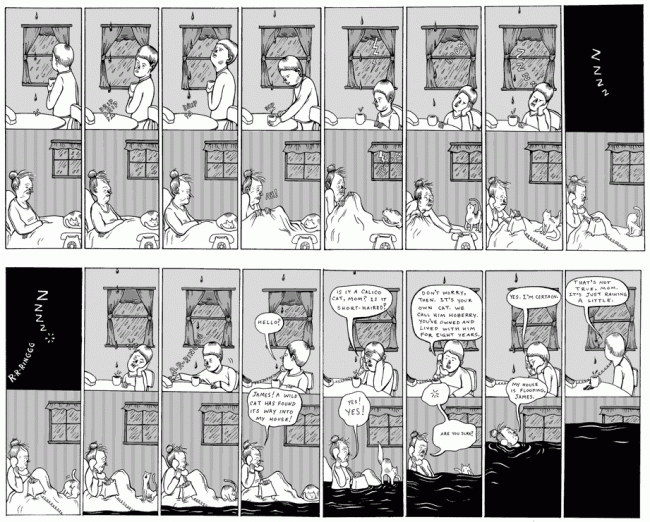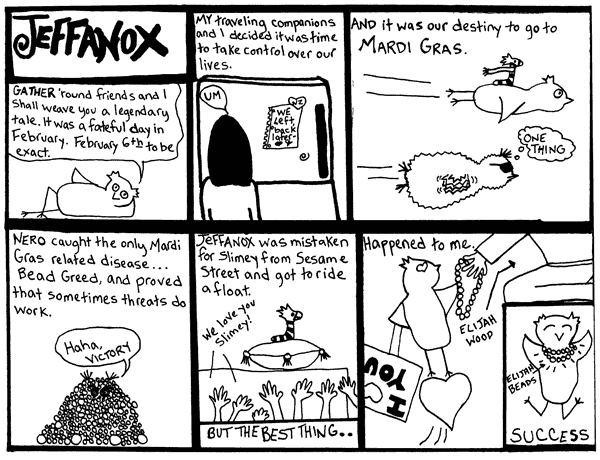
by Katrina Kuntz
While last February saw Central Park packed with an estimated four million visitors for Christo and Jeanne-Claude’s The Gates, the saffron structures were certainly not the only art activity happening in New York City this winter. The benefit of such a famous and popular show was that various art institutions in the city enjoyed extra attention during a generally low-energy season. Crowds at the Metropolitan Museum of Art forced the entrance line out the front doors and down the Park Avenue steps and the Whitney Museum of American Art was also packed. Even early on weekend mornings, in addition to the Park, galleries in Chelsea were populated with hardy individuals and tour groups willing to brave below-freezing wind chills in order to get their art fix.
Apart from The Gates, the biggest buzz was about the new Tim Hawkinson survey at the Whitney (Feb. 11 – May 29). Similar to Christo and Jeanne-Claude, Hawkinson seems to find his greatest inspiration in the co-mingling of the organic and the inorganic. While not the most unique of concepts, rarely is its execution as visceral as in his sculpture and multi-media projects. When the elevator doors opened onto the gallery floor, a musty, fertile smell hit the nose immediately. Many of Hawkinson’s works juxtapose one type of organic material with another. In Untitled (2003) photographically grafted human hands are arranged to mimic the branches of a tree seen from the sky, while Bird (1997) reconstitutes finger and toenail clippings into the skeletal structure of a hatchling bird.

The works that drew the most interest from the crowd were Hawkinson’s organic-mechanical installations, many of which translated bodily activities the execution of penmanship in Signature (1993), movements of facial features in Emoter (2003) into the language of machines. Despite a prevalence of wires and complex computer assemblages (placed right out on the gallery floor), by and large, the materials have no glossy patina of technology. Rather, they are primarily found or scavenged, including many of the computer programs that give life to his sculptures, a methodology that perfectly complements such organic subject matter. Indeed, Hawkinson’s insistence that beauty can be found in the most commonplace elements of our bodily/cultural detritus was the unifying theme of a very diverse show.
In Chelsea, Petah Coyne’s Above and Beneath the Skin at Galerie Lelong (Jan. 29 – March 12) also dealt with the confluence of the synthetic and the organic. Her large-scale assemblages, consisting largely of handmade roses and other flora dipped in wax, turn into bizarre environments for taxidermy birds. Deconstructed items of clothing peek through here and there, hinting at a more sinister engulfment of the female figure. Whether they were attached to the ceiling or drooped down from the gallery wall, elements of the sculptures invariably reached out to pull the viewer into their dense webs.
Down the street from Lelong, Nataraj Sharma’s show at Bose Pacia (Jan. 20 – Feb. 19) was interested in a more conceptual treatment of the organic and non, primarily that often uneasy relationship between man and machine. The Baroda, India-based artist’s large-scale paintings and etchings convey a great anxiety concerning India’s relationship between industry, human worth, and ecology. One of his most haunting paintings, the triptych Studio Karkhana (2003), shows a single male figure, face in shadow and body sagging, surrounded on either side with the tools and products of mechanical industry, which look both mysterious and threatening in a brownish-gray half-light.
Despite this effluence of good art throughout the city, in February, all streets inevitably led back to Central Park. The Gates was on everyone’s lips: on the subway, in shops, restaurants, and bars, everyone was talking about the project, and no matter in which direction individual opinion veered, the artists had seemingly achieved their objective in focusing a legendarily diverse populace on a single event. Christo has said that The Gates was in no way intended to be a comment on or a response to the events of 9/11, but despite the artist’s resistance, it is hard not to make a connection between the tragedy that united the city in 2001 and the art installation that brought it together again more than three years later. Call it like summer, as Queens resident Sheila Brewin did, or two weeks of Christmas, as carriage driver Paul Harvey told the Associated Press, what it truly felt like was an inversion of the events surrounding 9/11, as New Yorkers gathered to celebrate the beauty, not the destruction, of a beloved landmark.
April 2005







